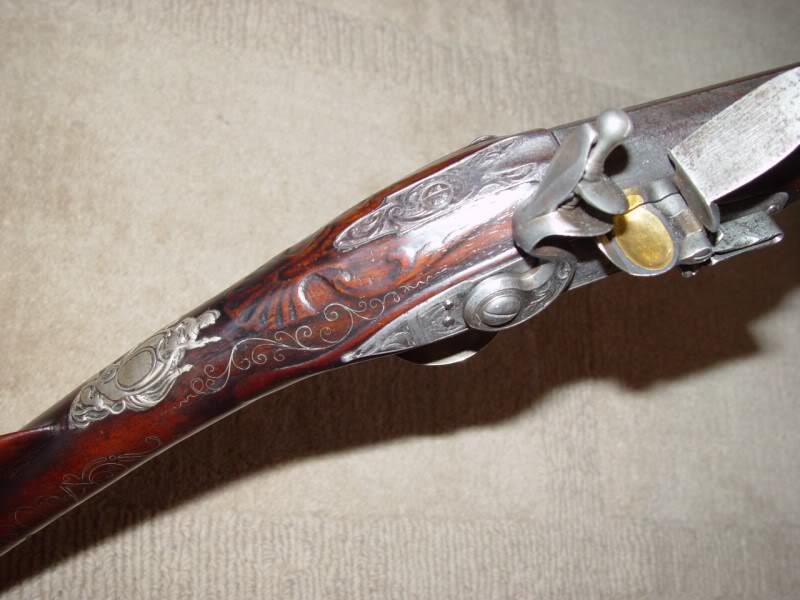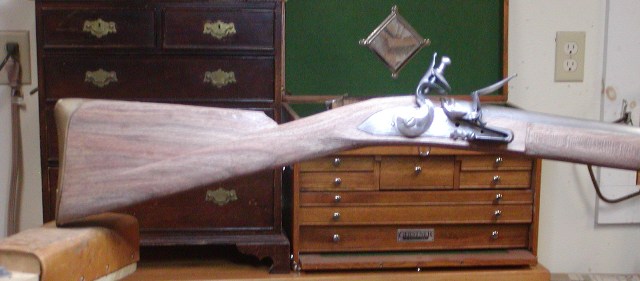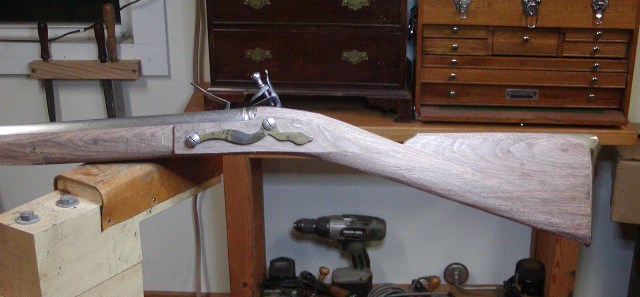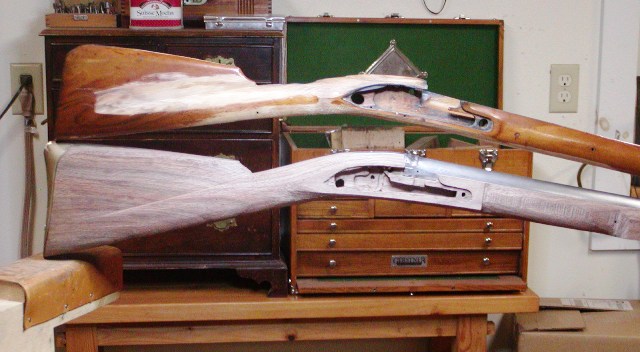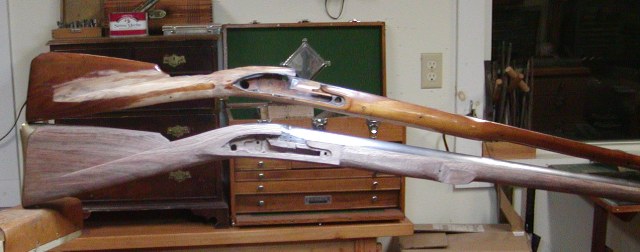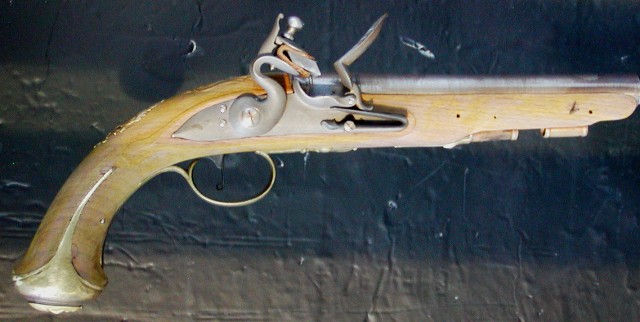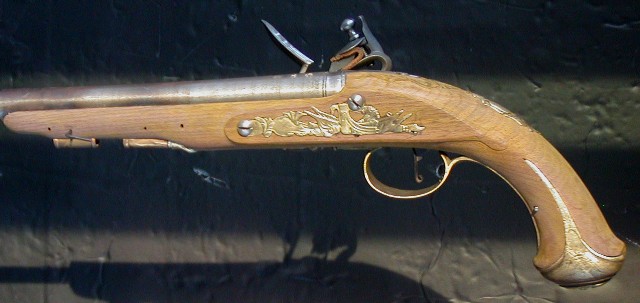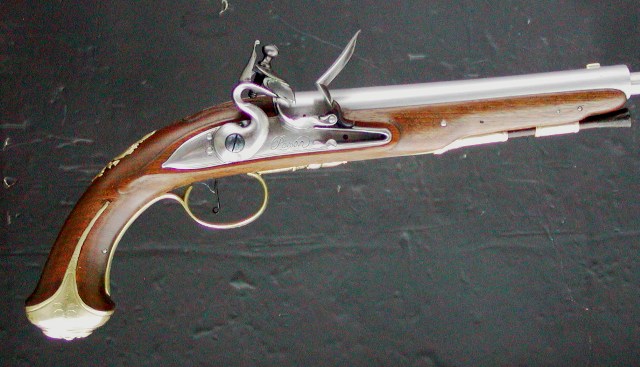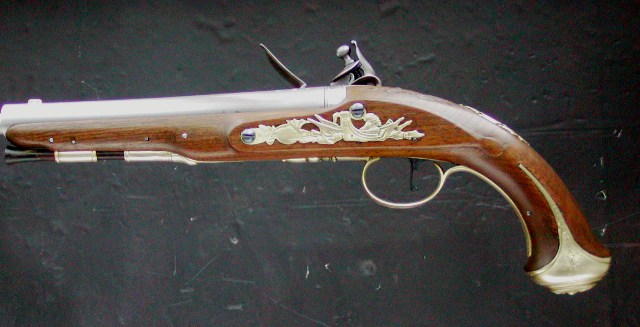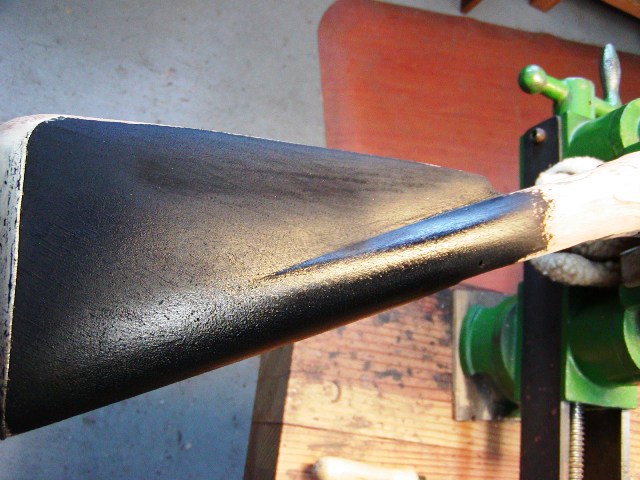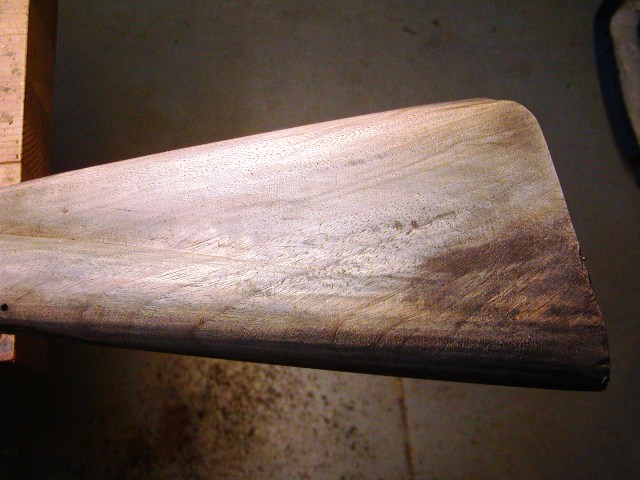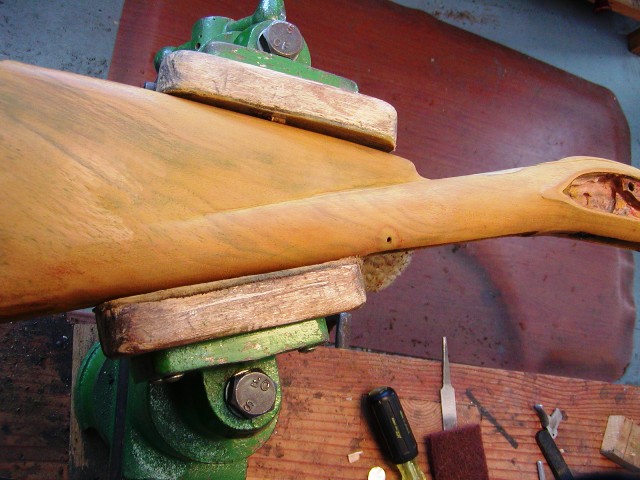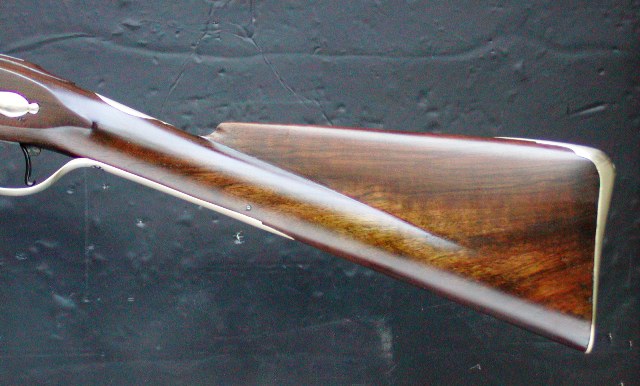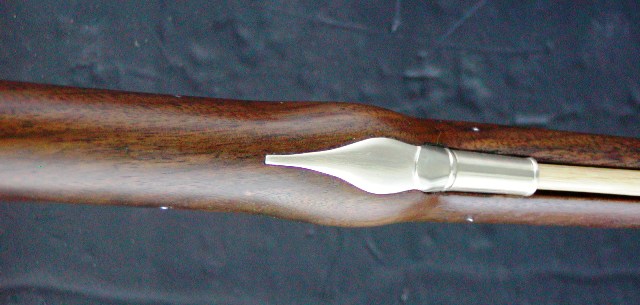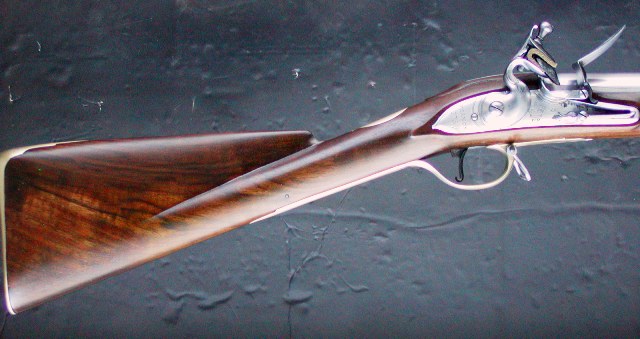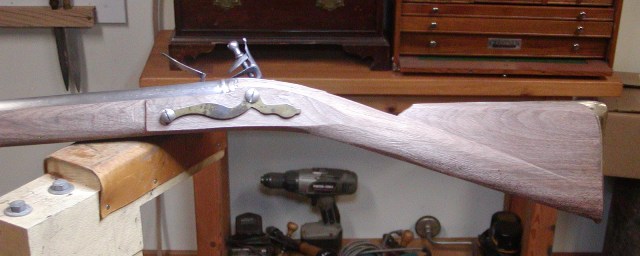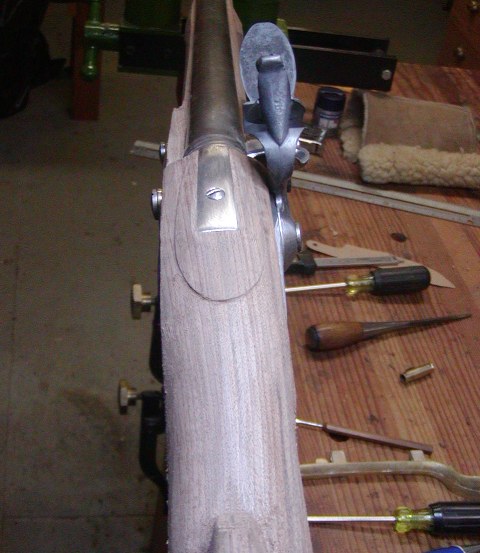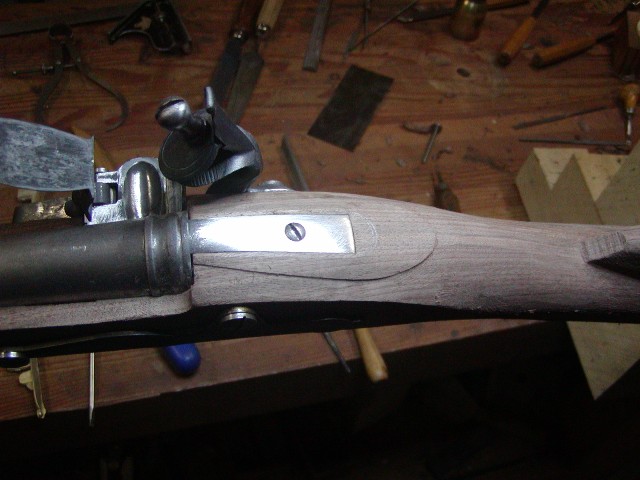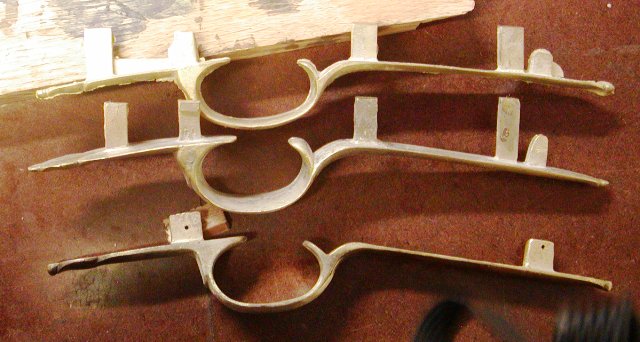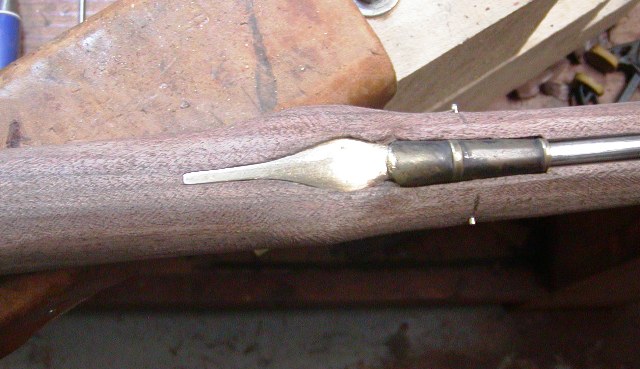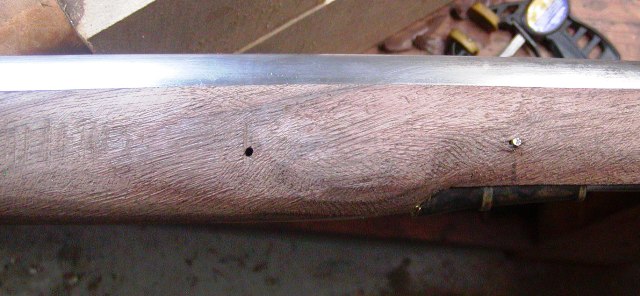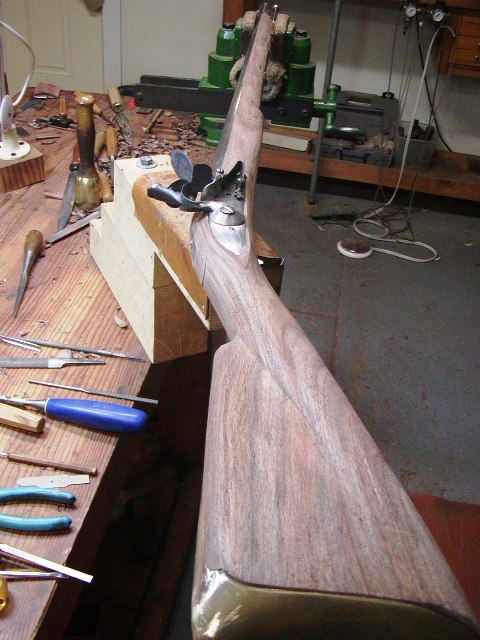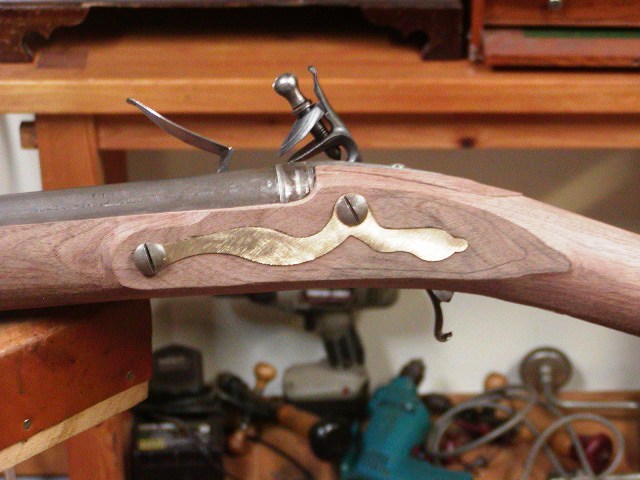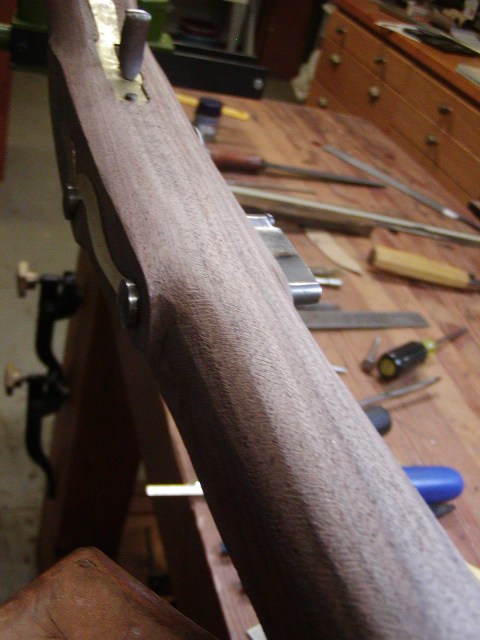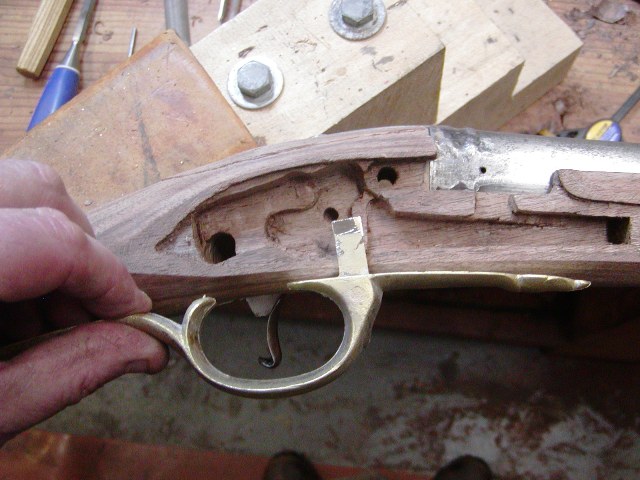Hi,
Got a lot done today. My first task was to drill all the pins for the rammer pipes. They all have holes already from the previous stock but they are all well off center of the tab. So I decided to drill new holes, which makes the process simpler. With so much wood removed from the fore stock, it makes locating and drilling the holes very easy. I just the pipe in the mortise but the tab resting on the side of the rod channel and mark the horizontal location I want for the hole on both sides of the stock. Then I use a adjustable square to measure the depth of the mortise and mark that depth on the side I will drill from. I mark the spot with an awl, and drill the hole through the wood with a #42 drill for a 3/32" pin. I clamp the pipe in place and using the hole as a guide, drill the brass. It all came out perfectly.
Next was roughing out the swell at the rear pipe. The swell on pattern 1769 and later Besses is not very big. Moreover, it is does not swell downward, just to the sides.
Also the swell is low on the stock and does not influence the upper half of the stock at the rear pipe. The widest point of the swell corresponds to the widest part of the swell in the rear pipe tang.
I did more shaping of the butt stock but am leaving the bottom flat until I install the trigger guard. Then everything is rounded.
I refined the lock panels more after inletting the side plate. I left a little more stock thickness on the side plate side to compensate for the smaller breech dimensions of the Pedersoli barrel, which is smaller than the originals. That preserves the wrist dimensions. I roughed out the noses of the lock panels using a gouge, round files, and round scrapers. I left it oversize for now. I also inlet the side plate. I left the mortise shallower than the plate's thickness so I could file off the surface and thin it. The brass plate must be stamped rather than cut resulting in the corners of the edge being rounded. That will never look right and I inlet it shallowly and filed off thickness so the rounded edges were gone.
Then I refined the lock and side plate panels a bit more. I left the tails large for now until I decide how I will shape them. Also, the flats will get narrower as I progress.
I also curved the bottom of the stock through the lock area and established the proper "knuckles" where it meets the lock panels.
Nick, you don't need to send those guards back. First, the TOW guards have a tall lug that is sufficient to position the cross pin within the lock mortise.
The thickness of wood between the surface of the trigger guard mortise and the bottom of the lock mortise should be 3/8"-13/32". So the lug needs to be at least 3/16" higher. If your lug is short then either dovetail and solder an extension on the top of the lug, (not hard to do) or file the lug thinner, cut a piece of 1/6" sheet brass into the lug shape with the proper height, solder it on the side of the existing lug, and drill and install a brass rivet to further anchor them together.
dave
